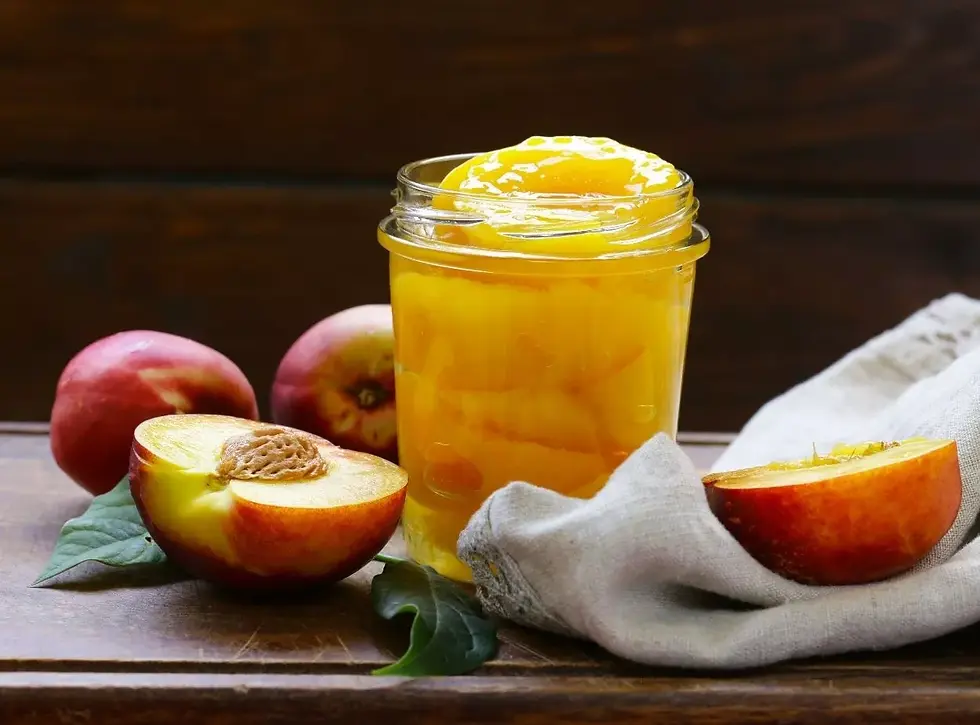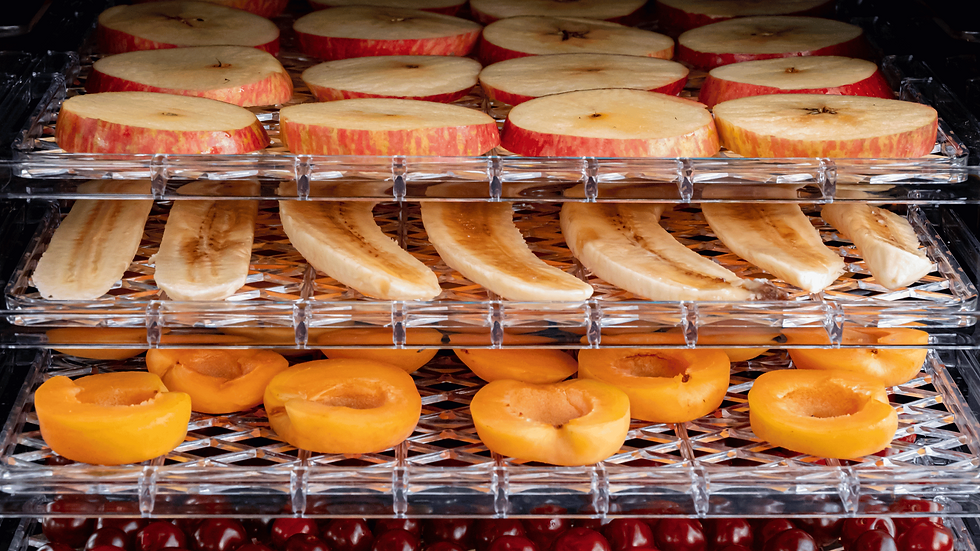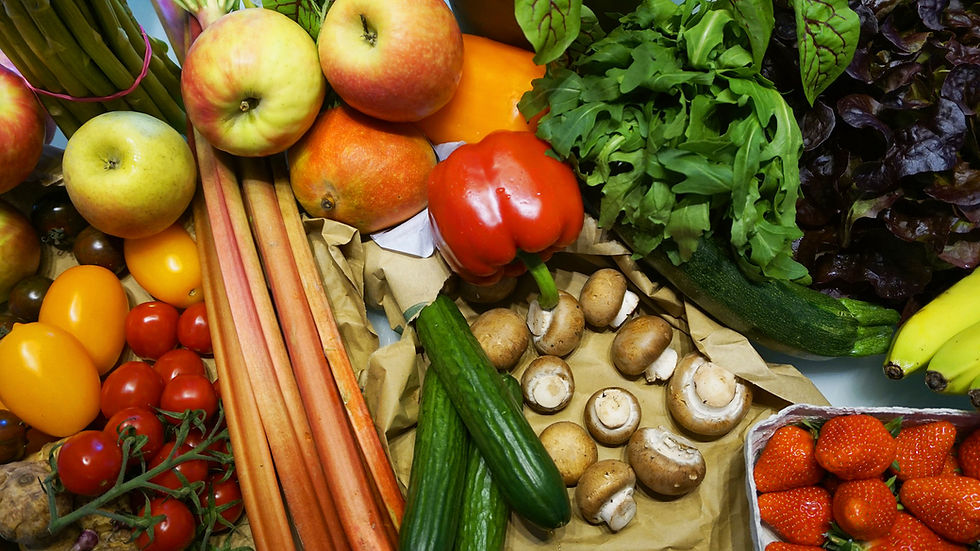How Did People Preserve Fruit Before Sugar?
- Walid
- Jul 29
- 10 min read
Exploring Natural Fruit Preservation Techniques
When it comes to keeping fruits fresh for longer periods, several effective fruit preservation methods without sugar can be employed. These techniques not only help maintain the nutritional value and taste of fruit but also avoid the use of unhealthy additives. Natural methods provide a healthier alternative, making it easier to enjoy seasonal fruits throughout the year. By utilizing dried, frozen, or canned options, you can enjoy the natural flavors without the need for sugar, thus promoting a more wholesome approach to fruit consumption.

Drying Fruits
One of the oldest methods of fruit preservation is drying. Dehydrating fruits removes moisture, which is essential for the growth of spoilage-causing microorganisms. You can use an oven, a dehydrator, or simply air-dry fruits in a warm, dry place. This method retains the natural flavors while extending the shelf life significantly. Look for fruits like apples, apricots, and bananas, which dry well and can be enjoyed as nutritious snacks anytime.
Want to explore more? Head over to our homepage and see what we have to offer!
Freezing Techniques
Another excellent option for fruit preservation methods without sugar is freezing. Properly frozen fruits can maintain their quality for many months. Wash and cut fruits into manageable sizes, then freeze them on a tray before transferring them to airtight containers. This prevents them from sticking together. Frozen fruits are fantastic for smoothies, toppings, or baking, providing easy access to seasonal flavors throughout the year.
This is just one of many great blogs we have—explore more right here.
Dehydrating fruits can intensify the flavor.
Freezing extends shelf life without loss of nutrients.
Incorporating these methods into your kitchen routine can lead to delicious and healthy preserved fruits. By avoiding sugar, you maintain the integrity of the fruit and allow natural sweetness to shine through.
Canning as a Preservation Method
Canning is another effective way of preserving fruits while maintaining their natural flavors. This involves placing fruits in jars and heating them to kill microorganisms. This process allows fruits to be stored for more extended periods without sugar. When canning, opt for fruits with high acidity, like peaches or plums, and follow safe canning guidelines for the best results.
Want to make your cooking healthier? Try our dehydrated cabbage for quick cooking and retaining nutrients.
Choose high-acid fruits for canning.
Use proper sealing for long-term storage.
Natural preservation methods help retain the essence of fruits while promoting healthy eating!
If you are looking for low energy consumption and high shelf life ingredients, dehydrated vegetable products are not to be missed.
Top Five Sugar-Free Methods for Preserving Fruits
When it comes to fruit preservation methods without sugar, many believe that sweetness is essential for flavor. However, there are creative, health-conscious alternatives to keep your fruits fresh once the harvest has finished. These methods not only maintain nutritional value but also allow for delicious, vibrant fruit options year-round.
1. Freezing
Freezing fruits is one of the simplest preservation techniques without sugar. Wash and slice the fruits you want to freeze and spread them on a baking tray. Once frozen, transfer them to airtight freezer bags. This method locks in freshness while allowing your fruits to stay intact for months. This is just one of many great blogs we have—explore more right here.
2. Dehydration
Dehydrating fruits removes moisture, preventing spoilage. You can use a dehydrator or an oven on the lowest setting. Cut fruits into uniform slices, and arrange them in a single layer before applying heat. The result? Chewy, nutrient-packed snacks without any added sugar. Want to make your cooking healthier? Try our dehydrated cabbage for quick cooking and retaining nutrients.
Temperature control is crucial.
Store in airtight containers.
Label with dates to track freshness.
3. Canning
Canning fruits involves sealing them in jars to create a vacuum. This method is effective when no added sweeteners are used, allowing the natural flavors to shine through. Be sure to follow safe canning practices to maintain quality and avoid spoilage.
Always sterilize jars before use.
Use boiling water baths for safety.

The Benefits of Sugarless Fruit Preservation
In recent years, fruit preservation methods without sugar have gained popularity due to health-conscious trends. These methods not only retain the natural flavors and colors of fruits but also extend their shelf life without adding unnecessary sugars. Sugarless preservation promotes a healthier lifestyle by reducing the risk of various health issues associated with high sugar intake, such as diabetes and weight gain.

Natural Fruit Preservation Techniques
Techniques such as freezing, drying, and canning are excellent for preserving fruits without sugar. Freezing locks in nutrients, while drying concentrates flavors and eliminates moisture, preventing spoilage. Canning, when done correctly, can also retain fruit’s freshness for long periods. These methods ensure that you enjoy nature's bounty year-round without compromising on health.
Flavor Enhancements Without Sugar
One of the great advantages of sugarless methods is the opportunity to experiment with natural flavor enhancers like spices or citrus juices. These alternatives can complement and elevate the taste of preserved fruits, providing variety and richness without the guilt of added sugars.
Freezing: locks in natural flavors.
Dried fruit: perfect for snacking.
Canning: ideal for long-term storage.
Here’s a quick comparison of sugar preservation versus sugarless preservation methods:
Choosing the Right Method
When selecting your approach, consider factors like available equipment and desired shelf-life. Each fruit may respond differently to various fruit preservation methods without sugar, so experimenting is key.
Try using lemon juice for apples.
Experiment with herbs for peaches.
“Preserved fruits can still be deliciously flavorful without added sugar—experiment and enjoy!”

How to Freeze Fruits Without Adding Sugar
Considering fruit preservation methods without sugar can be a fantastic way to maintain the natural taste and health benefits of your favorite fruits. Freezing fruits is an excellent technique that preserves their flavor and nutritional value. The key is to freeze them properly, ensuring they retain their texture and taste without adding any sugar. You can enjoy your frozen fruits in smoothies, desserts, or snacks without the extra calories from sugar. Preparing Fruits for Freezing
To begin, wash your fruits thoroughly to remove any dirt or pesticides. Next, peel and chop them into desired sizes. This step is crucial because smaller pieces will freeze faster and retain more of their original flavor. For fruits like bananas or peaches, cutting them into slices works best. Always remember to use fresh, ripe fruits for the best results.
Freezing Techniques
After preparing the fruits, lay them out on a baking sheet in a single layer. Place the sheet in the freezer for a few hours until the fruits are solid. Once frozen, transfer them to airtight containers or freezer bags, removing as much air as possible to prevent freezer burn.
Use fresh, ripe fruits.
Wash and cut the fruits appropriately.
Freeze in a single layer before transferring.
Use airtight containers or bags.
This reduces spoilage and helps retain freshness for longer periods.
Storage and Usage
Store your frozen fruits for up to six months for optimal taste and quality. When using them, there is no need to thaw; add them directly into recipes for smoothies or baked goods. This method allows you to enjoy the health benefits of fruits year-round. If you are looking for low energy consumption and high shelf life ingredients, dehydrated vegetable products are not to be missed.
Utilize directly in smoothies.
Add to baked goods such as muffins.
Use in yogurt parfaits.

Dried Fruit: Enjoying Natural Flavors Without Sugar
Dried fruit offers a delightful way to enjoy nature's candy without added sugars, showcasing various fruit preservation methods without sugar. By opting for these natural snacks, you retain essential nutrients while indulging in pure flavors. Dehydration is a popular technique that removes moisture, preventing spoilage while maintaining the fruit's integrity. This approach preserves the natural sweetness and taste of fruits like apricots, apples, and bananas, making them perfect for snacking.
Methods of Drying Fruits
There are several effective fruit preservation methods without sugar, ensuring that you can enjoy your favorite fruits year-round. Techniques such as air-drying, oven drying, and using dehydrators each provide unique benefits. Air-drying, for instance, requires no additional equipment, while ovens can speed up the drying process significantly. A dehydrator offers a specialized approach to keep flavors intact while removing moisture efficiently.
Choosing the Right Fruit
Selecting high-quality fruits is crucial for successful preservation. Look for vibrant colors, firm textures, and a sweet aroma. Here’s a quick guide:
Apples: Crisp and firm
Mangoes: Sweet and ripe
Peaches: Soft but not mushy
Enjoy Your Dried Fruits!
These fruit preservation methods without sugar will lead you to healthier snacking options. Homemade dried fruits can be easily incorporated into various dishes, from breakfast bowls to trail mixes.
Granola bars
Porridges
Salads
“With natural preservation, flavor takes the front seat, steering you towards a healthier lifestyle.”
Using vinegar and salt for Fruit Preservation
Exploring fruit preservation methods without sugar can be refreshingly simple, especially when incorporating vinegar and salt. These two common kitchen ingredients act as natural preservatives, allowing fruits to last longer while retaining their flavor. Vinegar's acidity prevents the growth of spoilage-causing bacteria, while salt dehydrates the fruit, significantly extending its shelf life. This method is an excellent alternative for those seeking healthier preservation techniques, avoiding sugar's unwanted calories.
The Process of Using Vinegar and Salt
To use vinegar and salt for fruit preservation, start by preparing a solution of equal parts vinegar and water, then add salt. Soak your chosen fruits for a few minutes to infuse them with the solution, and ensure that all pieces are evenly coated. Afterward, let the fruits dry before storing them in airtight containers. This method is not only effective but helps maintain the fruits' integrity and taste.
Want to explore more? Head over to our homepage and see what we have to offer!
Best Fruits for Preservation
Not all fruits respond equally well to vinegar and salt preservation. Some fruits are particularly suited for this technique. Here’s a quick list of the best candidates:
Apples
Pears
Cherries
Peaches
Plums
Tips for Successful Preservation
For effective fruit preservation methods without sugar, here are some essential tips to remember:
Use fresh, ripe fruits for best results.
Ensure your containers are well-sealed.
Experiment with different vinegar types for unique flavors.
“Achieving a longer shelf life for fruits without sugar is not only healthy but can also lead to delicious culinary experiences.”
This is just one of many great blogs we have—explore more right here.
Tips for Long-lasting Fruit Preservation Options
Preserving fruit without sugar can be a delightful and healthy endeavor. There are several effective fruit preservation methods without sugar that not only keep your fruits fresh but also maintain their natural flavors. The key is to use techniques that have proven successful over time while avoiding added sugars. Here, we’ll explore some of these options so you can enjoy fruit all year round.

Dehydration
Dehydration involves removing moisture from fruit, which inhibits the growth of bacteria and molds. It’s one of the simplest fruit preservation methods without sugar. You can use a food dehydrator, oven, or even air-drying in a warm, dry climate. This method intensifies flavors and results in a chewy texture that many love. Maintaining an adequate temperature is essential to ensure even drying.
Want to explore more? Head over to our homepage and see what we have to offer!
Canning
Canning is another reliable technique. When performed correctly, it creates a vacuum-sealed environment, effectively preserving fruit without adding sugar. Using pressure canners or boiling water can ensure safe preservation. Always follow tested recipes to maintain safety and quality.
Fermentation
Fermentation is an ancient preservation technique that enhances flavors and adds beneficial bacteria to your diet. Fruits can be fermented with just a few ingredients such as salt and water, creating a deliciously tangy treat.
Choose ripe fruits
Use glass jars or containers
Store in cool, dark places
Label containers with dates
Whichever method you opt for, remember that each has its nuances. Here's a quick comparison of some popular fruit preservation methods without sugar:
Preserving fruit without sugar allows you to enjoy its natural sweetness and flavor, while also keeping your diet healthy.
This is just one of many great blogs we have—explore more right here.
FAQ About Sugar-Free Fruit Preservation Methods
Preserving fruits without the use of sugar is gaining popularity among health-conscious individuals. Understanding the different methods of fruit preservation can help maintain the flavor and nutrients of your favorite fruits while avoiding excess sugar content. There are several strategies that work effectively, ensuring longevity without compromising health. In this blog, we will explore various fruit preservation methods without sugar and address common questions surrounding these techniques.
What are some common sugar-free preservation techniques?
Various sugar-free preservation methods make it easier to store fruits while enhancing their shelf life. Techniques like drying, freezing, and vacuum sealing can maintain the taste and nutritional value of fresh fruit. Each method has unique benefits, and deciding on the right one depends on the fruit type and your intended use. If you aim to enjoy fruits through all seasons, these techniques offer reliable solutions.
Are sugar alternatives safe to use?
While some people consider using sugar alternatives, natural options such as honey, maple syrup, or stevia can add sweetness without the drawbacks of regular sugar. However, it's important to be mindful of the quantity and type of alternative used to keep the sugar content as low as possible. Discuss your preferences with a nutritionist to find suitable options.
Drying
Freezing
Vacuum Sealing
These methods not only preserve the quality of your fruit but also keep added sugars at bay. The right technique can enhance your culinary possibilities, allowing you to enjoy the taste of fresh fruits year-round.
Can I combine methods for better results?
Absolutely! Combining different fruit preservation methods without sugar may yield even better results. For instance, you can freeze fruits after drying them for a longer shelf life. Experimenting with various techniques helps discover your ideal storage method, ultimately maximizing freshness and flavor.
Combine drying and freezing for optimal preservation.
Experiment with techniques based on fruit types.
Use vacuum sealing after freezing for extended freshness.




Comments